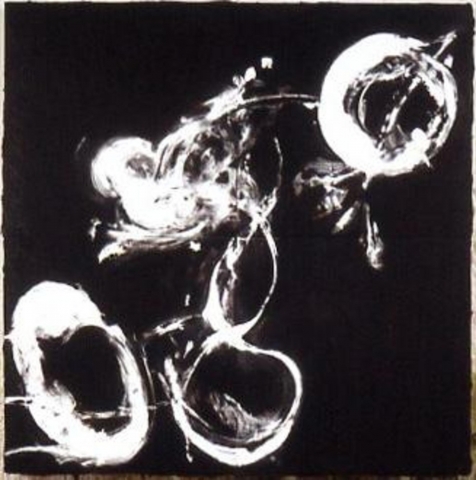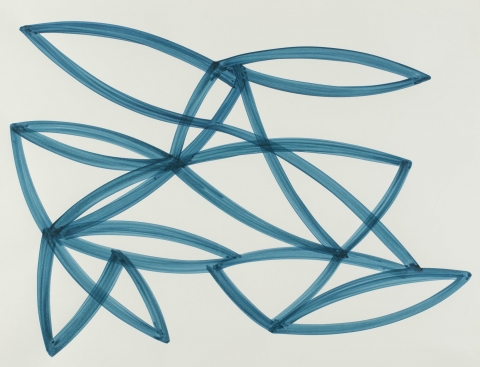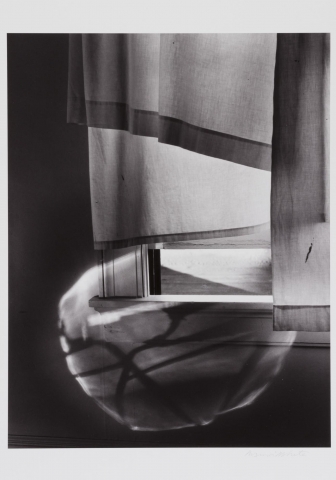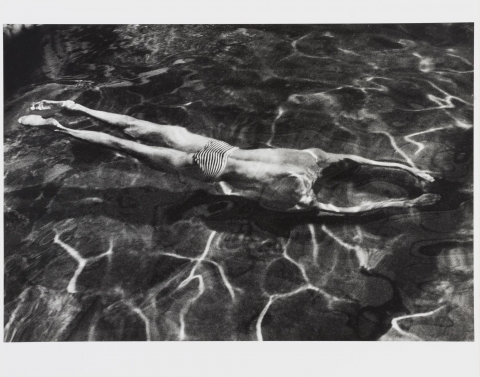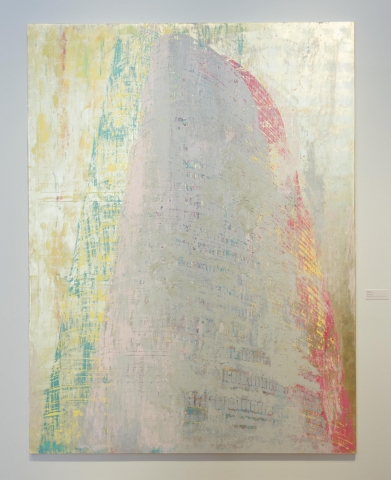Times are stressful. Election stress (and post-election) stress, COVID fears, economic anxiety, you name it. All fueled by television ads, friends on Facebook, the talking heads on cable news– it can sometimes feel like you can’t escape it. But when we slow down and actually spend extended time with a work of art, we can experience something completely new. With the simple practice of Mindfulness, we have the opportunity to engage with a work of art in a more intuitive way for a fresh, direct encounter.
Local artist and UMMA docent Laura Seligman is a mindfulness and meditation teacher who has led a series of mindfulness tours at the Museum for several years. We recently interviewed her about how she got involved with the mindfulness community, why looking at art is so relaxing, and how you can start meditating on your own at home while looking at art.
It won’t solve all the world’s problems, but it’ll help. Take a deep breath and dive in!
What inspired you to want to offer mindfulness tours at UMMA?
When I lived in Los Angeles, I attended a few programs that offered mindfulness in museums. That experience inspired me to create a contemplative experience at UMMA that drew on my background as a visual artist, a long-time meditator, and a docent. There is a palpable shift that happens when we engage a work of art with all of our senses and quiet reflection.
Choose a piece of art to spend some time with
Click on the work to see related mindfulness and reflection prompts
Can you tell us about the physical and emotional benefits of mindfulness?
It’s now well documented that mindfulness practices reduce stress, inflammation and chronic pain, improve sleep, lower blood pressure and affect many other health issues too numerous to name here. These practices help us quiet the mind, become more compassionate to ourselves and others, and pay attention to our bodies so we can begin to relax. Over time we also become more sensitive to others and the environment around us. What a gift during these unpredictable times!
What is it about UMMA, and museums in general, that makes it a good environment for mindfulness?
Most people look at a work of art for approximately 30-60 seconds. Much of that time is spent reading the label. Slowing down to experience a work of art can be a surprising act of discovery. A more contemplative approach interrupts this deeply ingrained, fast-paced way of looking and allows something very different to emerge. Practicing mindfulness invites a fresh, direct and spacious interaction with one single work of art and increases our enjoyment.
Do you have a personal favorite piece of art at UMMA?
I am drawn to the Lipstick Building painting by Enoc Perez located in the Contemporary Art gallery. The painting references the Lipstick Building in NYC, named for its shape and color. While doing research to present this painting for the Meet Me program (for people with memory loss), I was moved by the love story that inspired the painter, the scale of the work, and how materials were used in innovative ways.
Do you have any favorite books or other resources about mindfulness that you want to recommend?
Yes! Several.
Laura provided the following list, which we at UMMA have augmented with our own favorite resources.
For more details on other courses offered by Laura, please contact her through her website: www.lauraseligman.com
U-M resources
- A quick guide to Reflection Rooms on the U-M campus
- Follow this link for a comprehensive list of opportunities all around Ann Arbor, including Ann Arbor Center for Mindfulness, Ann Arbor Open Meditation, and Buddhist groups.
- A resource guide from the UM Counseling and Psychological Services (CAPS)
- “Creating Common Ground for a Kinder, Better Future: Growing the Capacity to Listen and Connect in Politically Charged Times” class from U-M Human Resources
- The Faculty and Staff Counseling and Consultation Office (FASCCO) is open for phone and virtual counseling sessions
- CEW+’s 30 Days of Self-Care
- CEW+’s mindfulness podcast, Strength in the Midst of Change
- CEW+’s upcoming mindfulness events
- Mental and Emotional Health resources from U-M Human Resources
Websites for FREE guided meditations
- University of California, San Diego, Mindfulness Center
- University of California, Los Angeles, Mindfulness Awareness Center
- University of Virginia, School of Medicine
- Mindful Self Compassion (Germer)
- Mindfulness Meditation from the Rubin Museum
Apps
Books on Mindfulness Meditation
- Jan Chozen Bays (2011). How to Train a Wild Elephant & Other Adventures in Mindfulness. Shambala Publications.
- Tara Brach (2016). True Refuge: Finding Peace and Freedom in Your Own Awakened Heart. Bantam Books.
- Jack Kornfield (2017). No Time like the Present: Finding Freedom, Love, and Joy Right Where You Are. Atria Books.
- Thich Nhat Hanh (1975). The Miracle of Mindfulness: An Introduction to the Practice of Meditation. Boston: Beacon Press.
- Diana Winston (2019). The Little Book of Being: Practices and Guidances for Uncovering Your Natural Awareness. Sounds True.
- Ruth King (2018). Mindful of Race: Understanding and Transforming Habits of Harm. Sounds True.
- Jeffrey Brantley, MD and Wendy Millstine, NC (2008). Daily Meditations for Calming Your Anxious Mind. New Harbinger Publications.
- Deborah Eden Tull, (2018), Relational Mindfulness. Wisdom Publications.




